Horse - Choice Pasture Seed Mix
Specifications
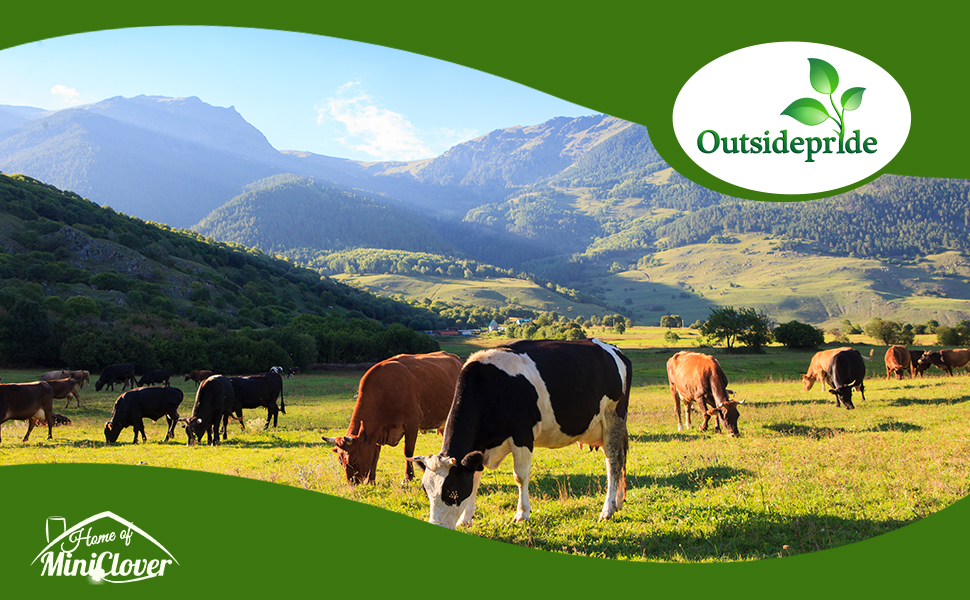

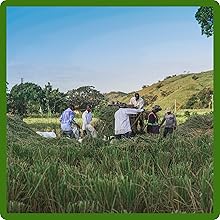
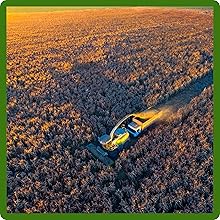
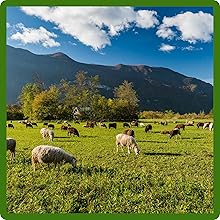
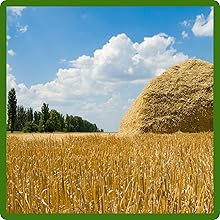
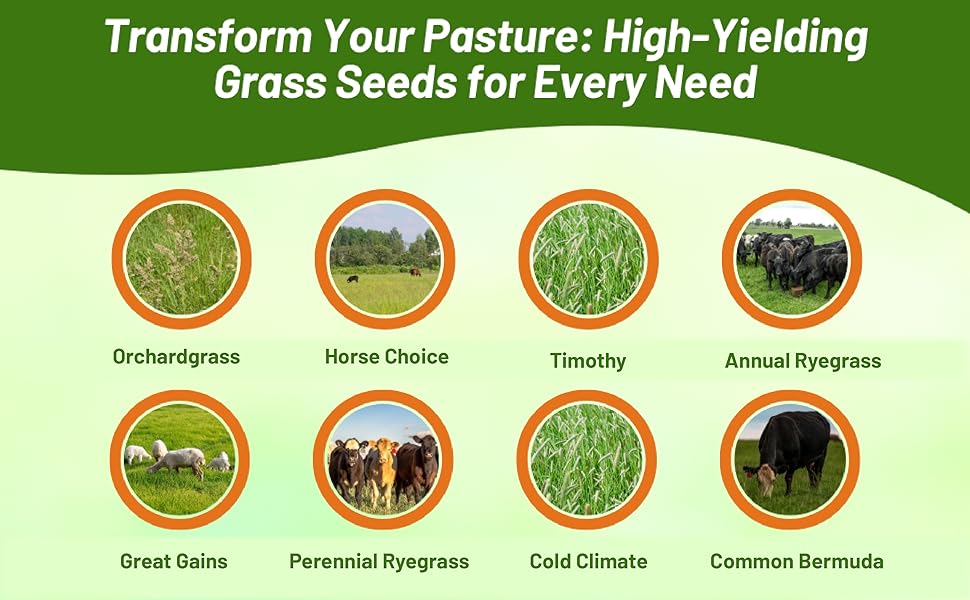
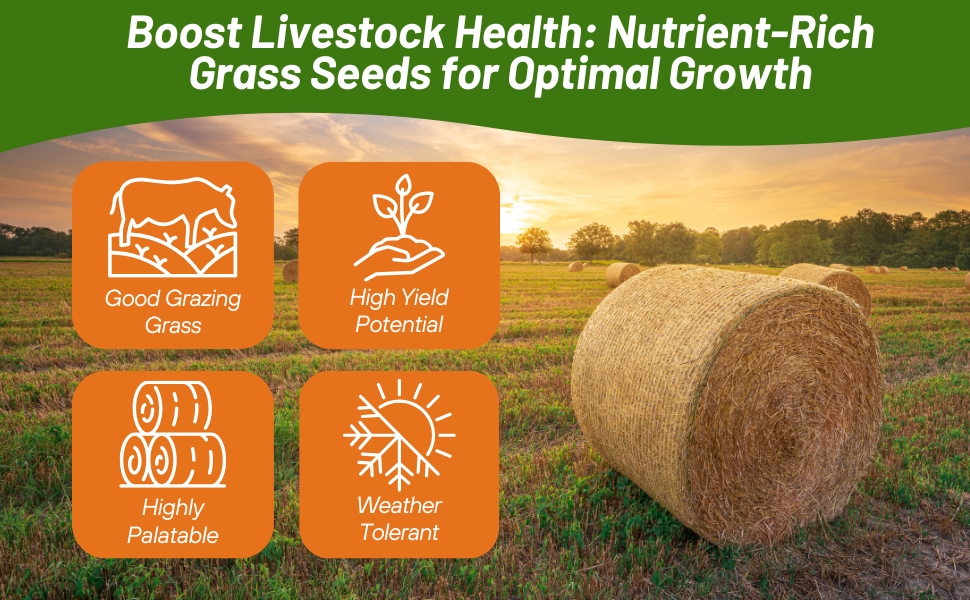
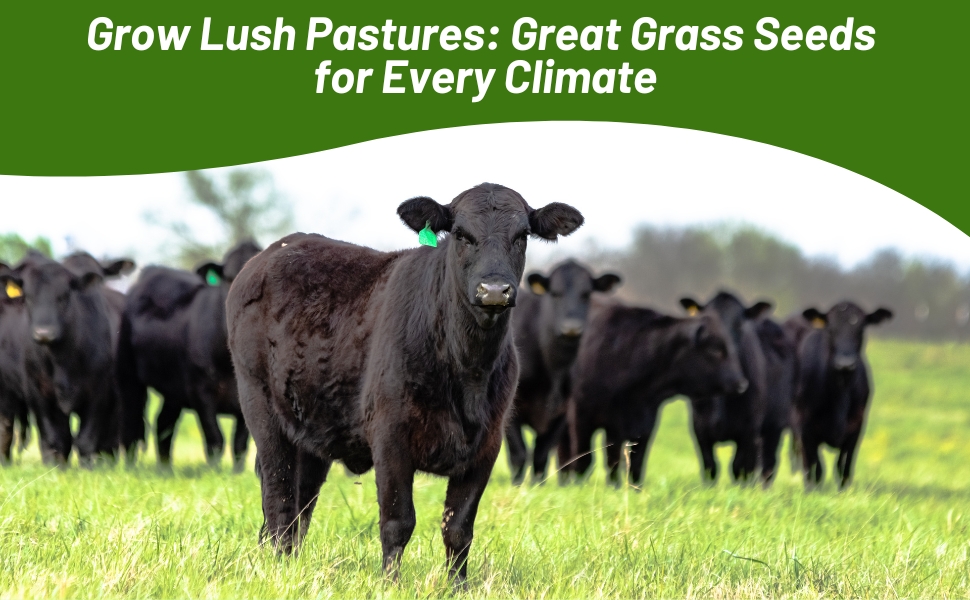
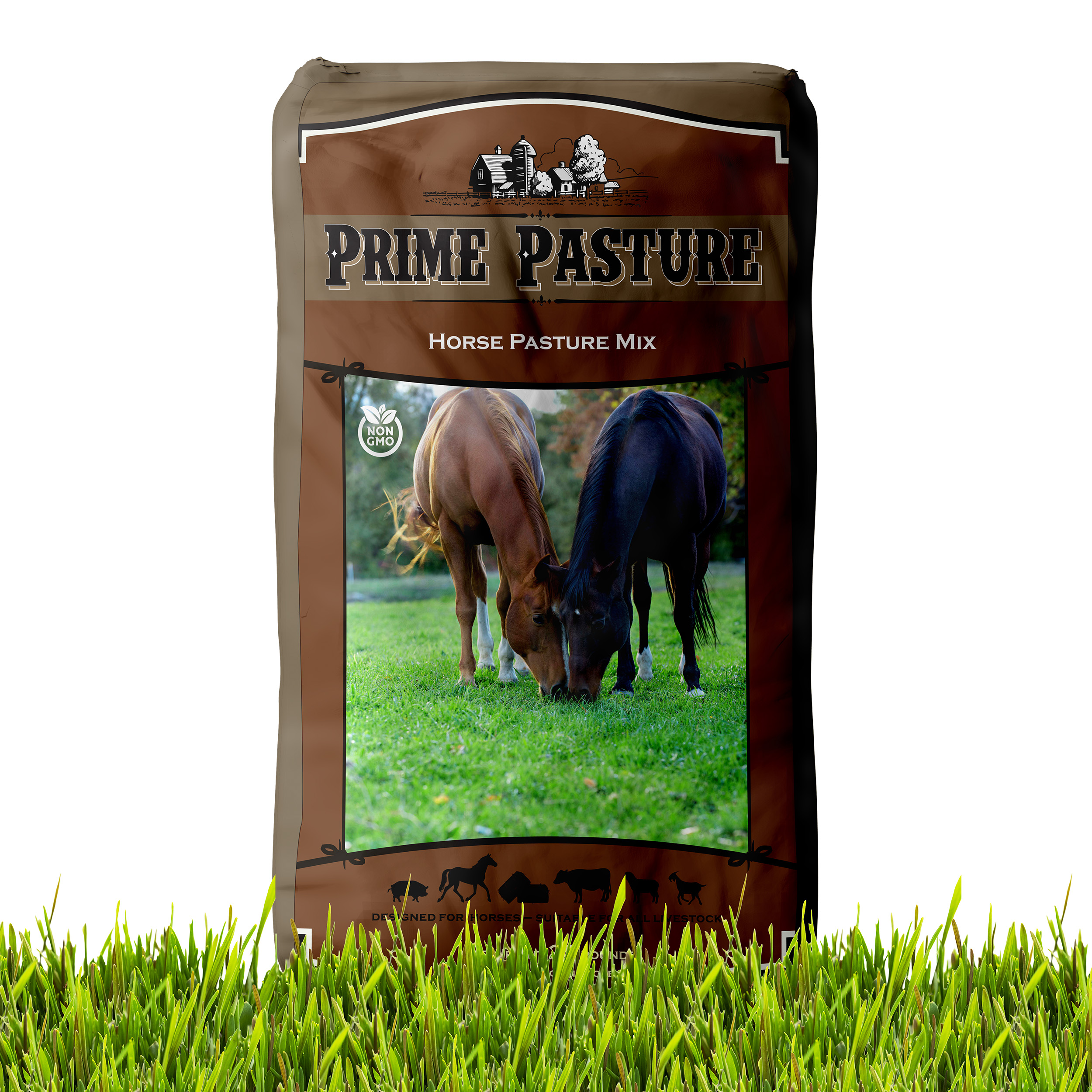
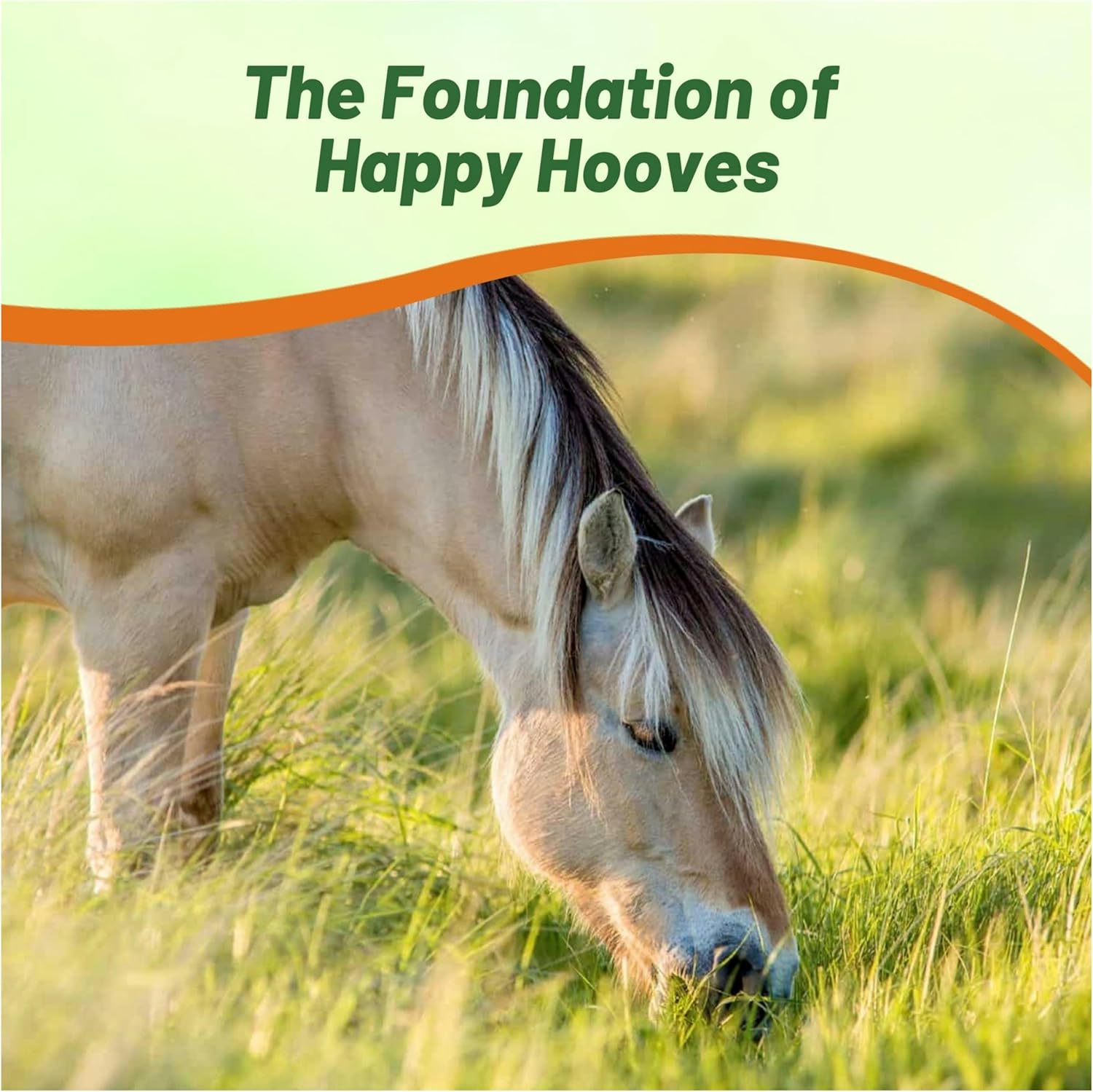
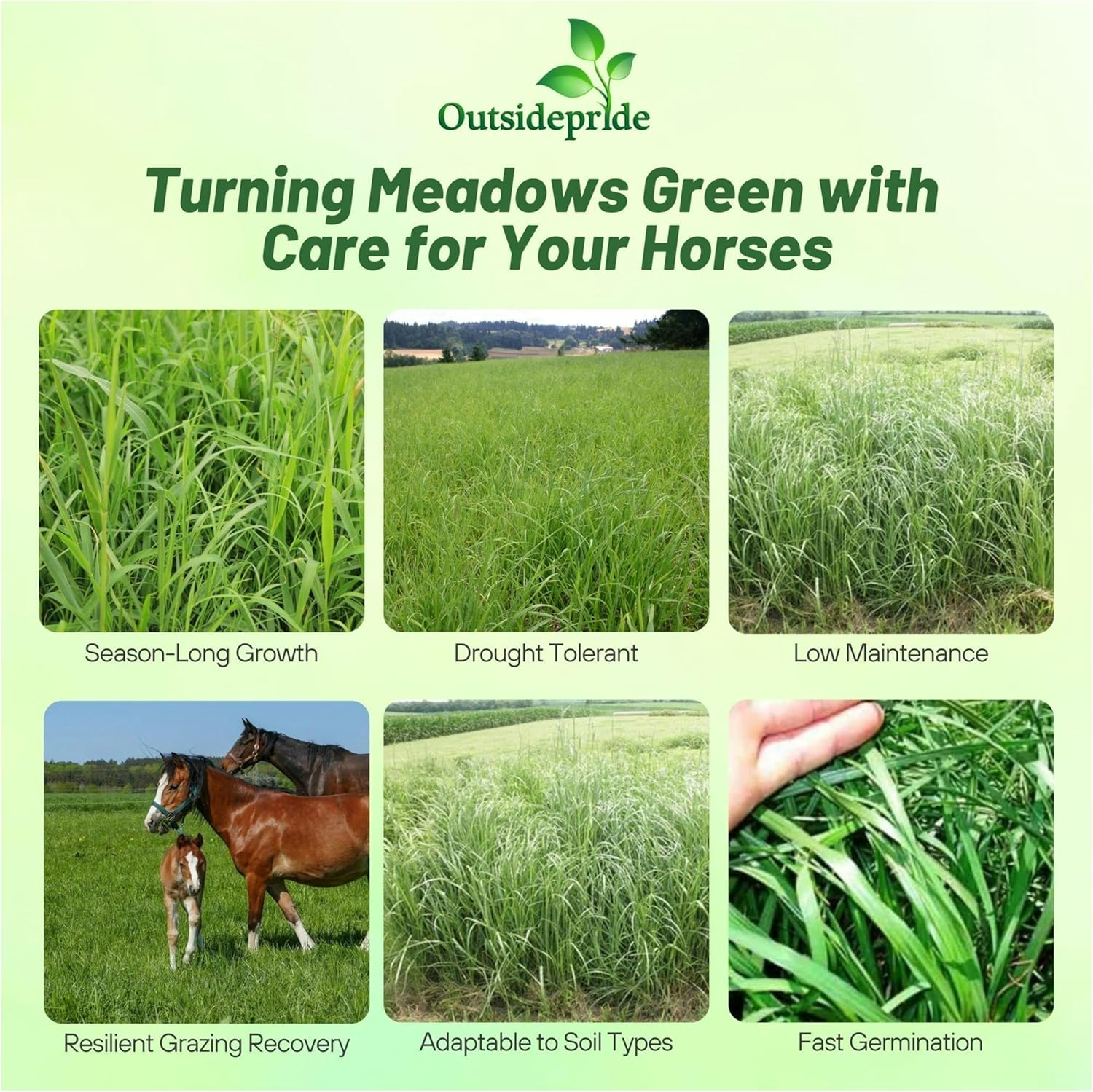
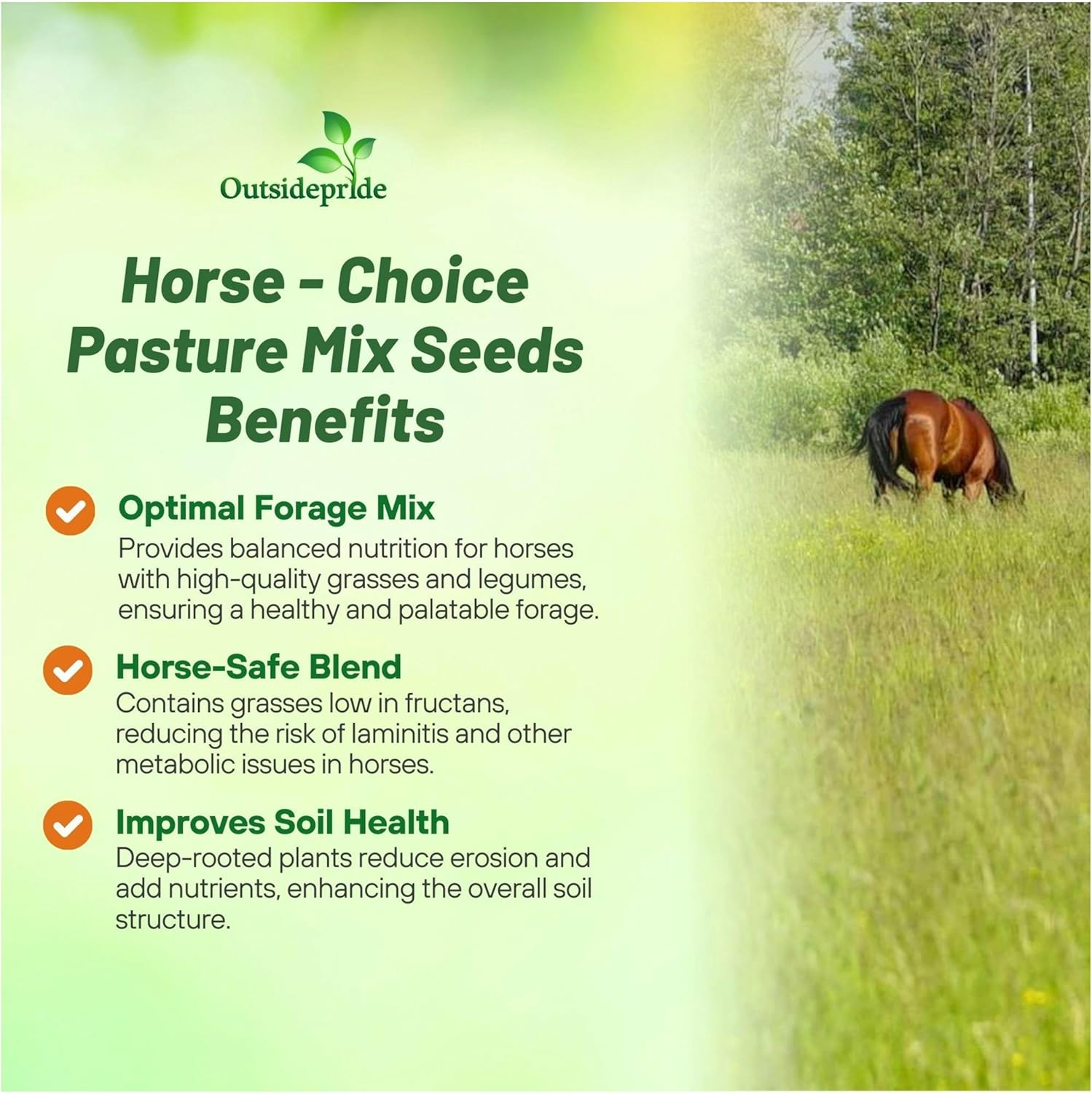
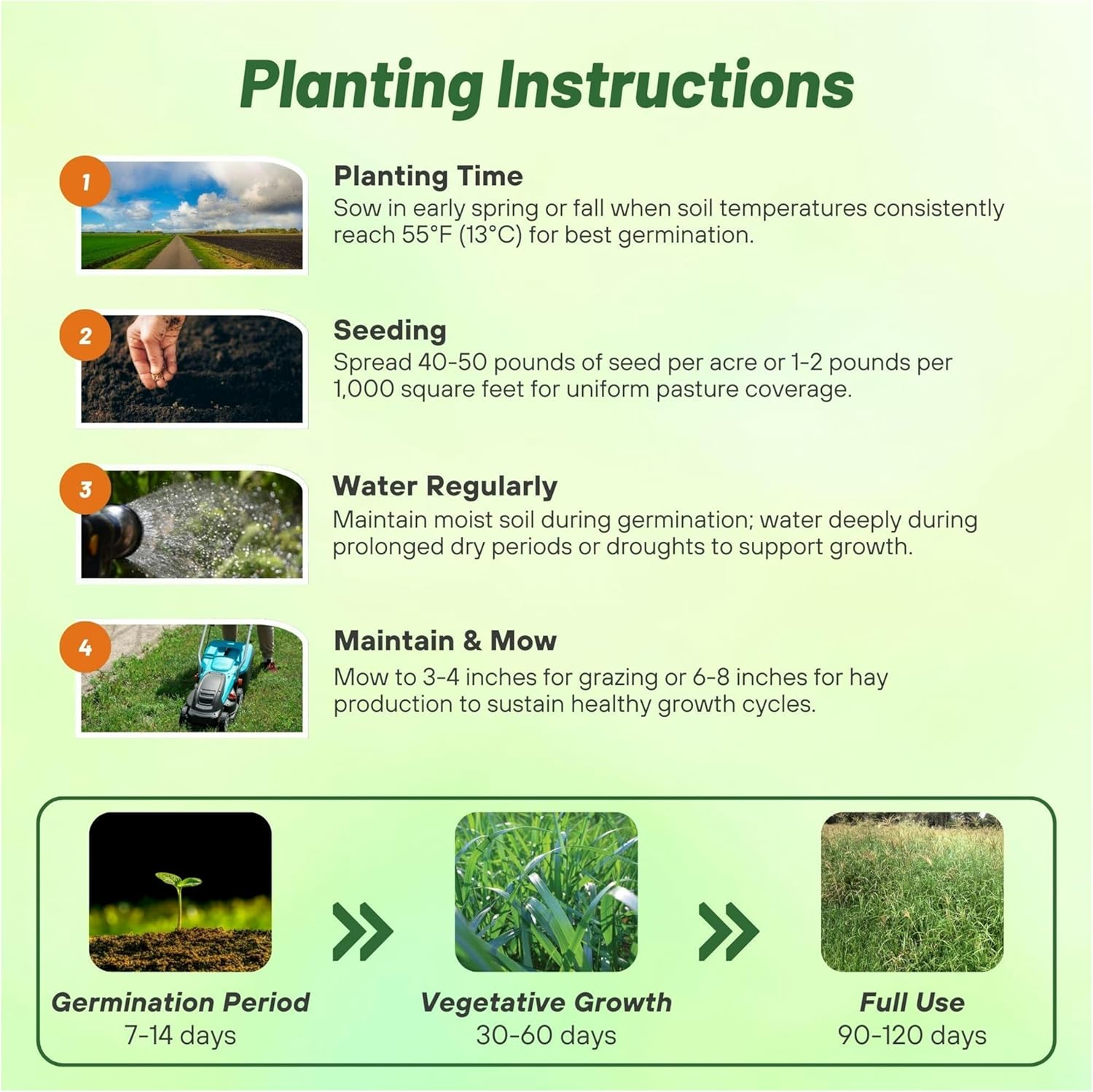
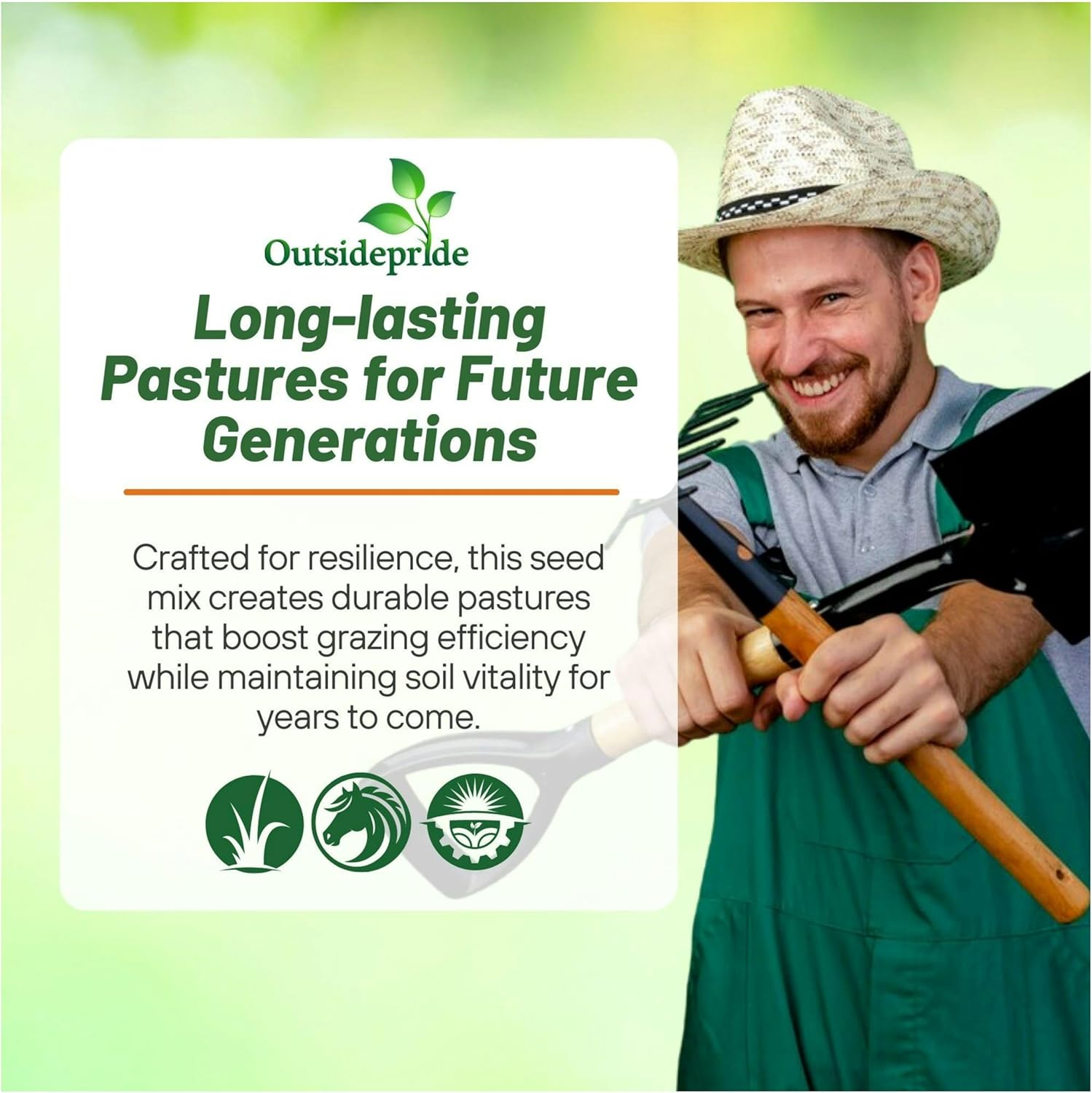


Professional's Choice horse pasture mixture consists of orchardgrass, timothy, endophyte-free tall fescue, and Italian ryegrass. While designed primarily for horse pasture, this mixture is often used for other livestock pastures where legumes are not desired.
When you put orchardgrass, timothy, fescue, and Italian ryegrass together you have a winning pasture combination with high production for years to come. Works well in any region of the United States except the deep South unless fall overseeding.
Approximate Percentages:
- 35% Amba Orchard Grass
- 25% Safe Tall Fescue
- 25% Corral II Intermediate Ryegrass
- 15% Climax Timothy
Timothy
Timothy is a winter-hardy bunchgrass that is easy to establish, and is well known for premium horse hay. Adapted to fertile, moist, medium heavy soils around the country. Responds rapidly to fertilization. Timothy mixes well in combination with other grasses and legumes. Timothy is easy to establish new pastures, and to over-seed old pastures that need rejuvenated.
Safe Tall Fescue
Safe is adapted to about the same area as Kentucky-31 but matures about 7 to 10 days earlier. The two varieties have similar disease resistance. Safe has consistently been the highest yielding tall fescue variety in North Carolina tests for the past several years, generally producing 8,000 to 12,000 lb of dry forage, and one year producing 14,400 lb.
Corral II Intermediate Ryegrass
Intermediate ryegrasses are generally longer lived than common annual and western types and tend to be bi-annual in nature. They are quick to establish, high yielding and being tetraploid, they are highly digestible. They are very suitable for silage, hay production and grazing. Heading dates are usually late in May. Benefits include increased animal production, increased yields, palatability & intake, quick utilization of forage. Ryegrass does well in soils with a wide pH range from 5 - 8.
Orchard Grass
Orchard grass is a rapid growing bunch grass which has the ability to grow on relatively poor soils. Orchard grass is generally the earliest maturing cool season grass. It is usually one week earlier in maturity than tall fescue and two weeks earlier than smooth brome grass. When selecting a variety consider finding a cultivar that is later in maturity and has resistance to rust. If adequately fertilized, production is distributed well through the growing season. It does well in drought and in dry land conditions. Needs lime on acidic soils.
Seeding Rate
40 to 50 lbs/acre.
































